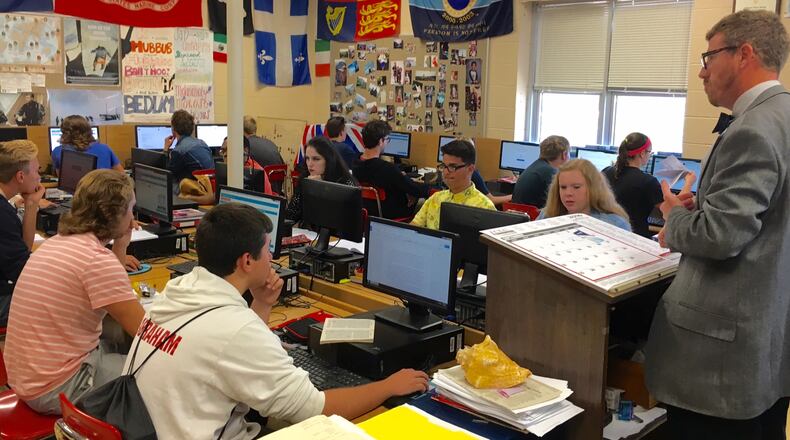After multiple glitches in the first years of online testing, many schools have reported a smoother experience the past two years.
RELATED: Two state tests eliminated for Ohio students
Chris Merritt, chief technology officer for Kettering schools, gave the example of an online ACT exam recently given simultaneously to 220 Fairmont High School juniors, using the Pearson TestNav App on their Chromebook computers. Merritt said it worked “nearly flawlessly.”
“That is the same platform that we had so many issues with when we gave the PARCC assessments years ago,” he said. “The online testing platforms have come a long way. The AIR platform also works really well now, and neither platform uses a lot of bandwidth.”
Testing impact
State testing matters differently from student to student and district to district.
LAST YEAR: Schools finally get a year without testing changes
** Most third grade students in Ohio have to achieve a certain level of reading competency on their state English exam (or an approved alternate exam), or they will not advance to fourth grade.
** The high school end-of-course exams provide the primary pathway to graduation in Ohio. Students must earn at least 18 of 35 points on the seven exams to graduate via that pathway. But testing’s impact on graduation is shrinking, as Ohio lawmakers recently added non-test pathways to graduation for the Class of 2018, and they are expected to consider similar measures for future classes.
RELATED: State school board seeks even more testing cuts
** Huber Heights Superintendent Sue Gunnell said her district uses test results to evaluate how well schools are meeting students’ needs, and to make adjustments in curriculum and instruction. But she cautioned that students may be talented in many academic areas — arts, music, languages and more — that are not measured by state tests.
“We also hear from employers who say soft skills are probably most important as people are entering into the job market — and those also aren’t reflected in these tests either,” Gunnell said, referring to skills such as work ethic, communication and teamwork.
Key school districts
The spring state tests make up the bulk of the state report card that schools and districts are issued each fall. While all schools hope for good report cards, there is special significance for some districts.
Because of poor student test results the past two years, if Trotwood-Madison schools receive an “F” in performance index and a “D” or “F” in student growth based on this spring’s tests, it will face state takeover next fall via an Academic Distress Commission.
RELATED: Graduation changes for 2019 still up in the air
Dayton Public Schools is not at risk of takeover, but parents and school board members alike expressed frustration when the district’s students scored the second-worst performance index in Ohio on last year’s state tests.
On the other end, Oakwood High School last year celebrated the fact that its students posted the highest performance index in the state on these tests.
Who takes which tests?
Students in grades 3, 4, 6 and 7 will take two state tests this spring — English and math, each of which is broken into two parts. So most students in those grades will have four days this spring where they take a 1-2 hour test. Students in grades 5 and 8 will add the two-part science test, meaning they’ll likely test on six days this spring … although some districts take the science test all in one day.
High school students’ state tests are “end-of-course exams” so how many tests a student takes each year depends on what courses they are taking. There are a total of seven end-of-course exams — two in math, two in English, plus biology, American history and American government. It is fairly common for freshmen and sophomores to take three two-part tests each year, meaning they would take 1-2 hour tests on six days.
School news: Follow Jeremy Kelley DDN on Facebook and Twitter
About the Author

